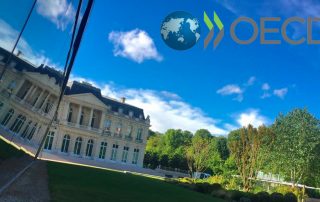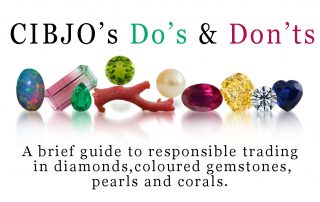CIBJO President to present new Responsible Sourcing Blue Book at OECD’s Responsible Minerals Supply Chain Forum in Paris
ABOVE: OECD headquarters in Paris, the venue for next week’s 13th Forum on Responsible Mineral Supply Chains.
APRIL 17, 2019
CIBJO President Gaetano Cavalieri will present the World Jewellery Confederations’ recently approved Responsible Sourcing Blue Book next Tuesday, April 23, 2019, to the full plenary of the 2019 Forum on Responsible Mineral Supply Chains, organised by the Organisation for Economic Cooperation and Development (OECD) at its headquarters in Paris.
The OECD forum, which this year will welcome about 1,200 delegates, will feature sessions on measuring impact and driving change, opportunities and challenges related to specific minerals such as diamonds, base metals, cobalt, the 3Ts and gold, and regulatory and policy updates related to responsible sourcing. In particular, the forum will focus on the OECD’s highly-regarded Due Diligence Guidance framework for minerals from high-risk areas.
The CIBJO president will be speaking during a late afternoon session on the first day of the forum, at which selected OECD stakeholders will provide overviews of current and upcoming projects, with a focus on toolkits and data sources meant to facilitate the OECD Due Diligence Guidance for Responsible Mineral Supply Chains.
The first edition of the Responsible Sourcing Book was approved by the CIBJO Board of Directors in January of this year. While not a definitive code of practice, it recommends guidelines and procedures by which all participants in the jewellery supply chain may undertake supply-chain due diligence to support responsible sourcing, irrespective of their size or financial capacity, to identify, assess and mitigate any identifiable risks related to human rights, labour practices, money laundering, financing of confict and corruption.
It becomes the latest in CIBJO’s Blue Book series of industry guides for standards and nomenclature. It specifically references the the OECD’s five-step Due Diligence Guidance for Responsible Mineral Supply Chains, and supports the United Nations Guiding Principles on Business and Human Rights.
During his presentation, Dr. Cavalieri will also outline a complementary programme, currently being created to support members of the jewelry industry implement the recommended due diligence measures in their own businesses.













